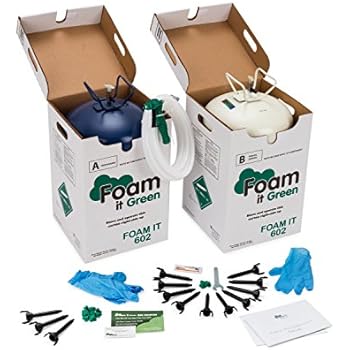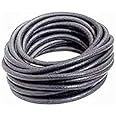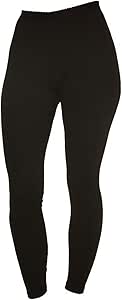Closed cell foam is a versatile material with a wide range of applications in construction and manufacturing. Known for its unique structure, which consists of tightly packed cells that do not allow air or liquid to penetrate, closed cell foam offers several benefits, including water resistance, thermal insulation, and durability. This article explores the top uses of closed cell foam in these industries, providing insights into its advantages and real-world applications.
Understanding Closed Cell Foam
Closed cell foam is manufactured by trapping gas bubbles in a polymer matrix through a process called foaming. This results in a lightweight and durable material that is resistant to moisture, chemicals, and temperature fluctuations. The closed structure of the foam provides excellent insulation properties, making it a popular choice for various applications.
Top Uses of Closed Cell Foam in Construction

In the construction industry, closed cell foam is increasingly used for its insulation properties and structural advantages. Here are some of the top applications:
- Insulation: Closed cell foam is widely used as an insulation material in walls, roofs, and floors due to its high R-value (thermal resistance). It helps reduce energy costs by minimizing heat transfer.
- Air Sealing: The foam’s ability to create a tight seal makes it ideal for air sealing in building envelopes. This prevents air leakage, contributing to better energy efficiency.
- Moisture Barrier: Closed cell foam acts as a moisture barrier, protecting structures from water damage and mold growth, particularly in basements and crawl spaces.
- Structural Support: In some applications, closed cell foam is used as a lightweight structural support material, particularly in composite panels and sandwich constructions.
- Soundproofing: The dense nature of closed cell foam provides excellent sound attenuation, making it a popular choice for soundproofing walls and floors in commercial and residential buildings.
Case Study: Closed Cell Foam in Insulation

A notable example of closed cell foam’s effectiveness in insulation can be seen in the renovation of a 1960s office building in Chicago. The building’s energy costs were significantly reduced after applying closed cell spray foam insulation to the roof and walls. The result was a 30% decrease in heating and cooling expenses, demonstrating the material’s efficiency and effectiveness in improving energy performance.
Applications in Manufacturing

In manufacturing, closed cell foam is utilized for various purposes, including cushioning, packaging, and insulation. Here are some of the primary applications:
- Cushioning and Packaging: Closed cell foam is commonly used in packaging sensitive equipment, electronics, and fragile items to protect them from impacts during shipping and handling.
- Gaskets and Seals: The foam’s water-resistant properties make it ideal for creating gaskets and seals in manufacturing machinery and equipment, preventing leaks and maintaining system integrity.
- Thermal Insulation: Many manufacturing processes require temperature control. Closed cell foam is used to insulate piping and tanks, ensuring that temperature-sensitive materials are maintained at the correct temperature.
- Product Components: Closed cell foam is often used as a component in finished goods, such as sporting equipment (e.g., life jackets, helmets) and automotive parts, thanks to its lightweight and durable nature.
- Prototype Models: In the prototyping phase of product development, closed cell foam is often used to create lightweight models that can easily be modified and tested.
Case Study: Closed Cell Foam in Packaging
A leading electronics manufacturer integrated closed cell foam into its packaging solutions to enhance product protection during transit. By switching to closed cell foam inserts, the company reported a 20% decrease in product damage claims and a 15% reduction in packaging costs. This case illustrates how the right material choice can lead to significant cost savings and improved customer satisfaction.
Benefits of Closed Cell Foam

The popularity of closed cell foam in construction and manufacturing can be attributed to its numerous benefits, including:
- Water Resistance: Closed cell foam does not absorb water, making it ideal for applications in wet environments.
- Thermal Insulation: The material provides excellent thermal insulation, which is crucial for energy efficiency in buildings and temperature-sensitive manufacturing processes.
- Durability: Closed cell foam is resistant to wear and tear, chemicals, and UV radiation, ensuring a long lifespan in various applications.
- Lightweight: The lightweight nature of closed cell foam makes it easy to handle and reduces transportation costs.
- Customizability: Closed cell foam can be easily cut, shaped, and molded to fit specific application requirements, making it a flexible material for designers and engineers.
Challenges and Considerations

While closed cell foam offers many advantages, there are also challenges to consider when using it in construction and manufacturing:
- Cost: Closed cell foam can be more expensive than other insulation materials, which may be a consideration for budget-conscious projects.
- Installation: Proper installation is crucial to maximize the benefits of closed cell foam. If not applied correctly, it may not perform as expected.
- Environmental Impact: Some closed cell foams are made with chemicals that may have environmental implications, prompting manufacturers to seek eco-friendly alternatives.
The Future of Closed Cell Foam in Construction and Manufacturing

As technology advances and the demand for energy-efficient solutions grows, the future of closed cell foam looks promising. Innovations in formulations and manufacturing processes are expected to enhance the properties of closed cell foam, making it even more suitable for a broader range of applications. Additionally, the push for sustainable materials may lead to the development of environmentally friendly closed cell foams that maintain performance while minimizing ecological impact.
Closed cell foam is a vital material in both construction and manufacturing, offering a plethora of benefits such as insulation, moisture resistance, and durability. Its applications in insulation, air sealing, packaging, and product components demonstrate its versatility and effectiveness. As industries continue to seek energy-efficient and sustainable solutions, closed cell foam is poised to play an even more significant role in shaping the future of construction and manufacturing. Understanding its various uses can help professionals make informed decisions when selecting materials for their projects, ultimately leading to better performance and cost savings.


